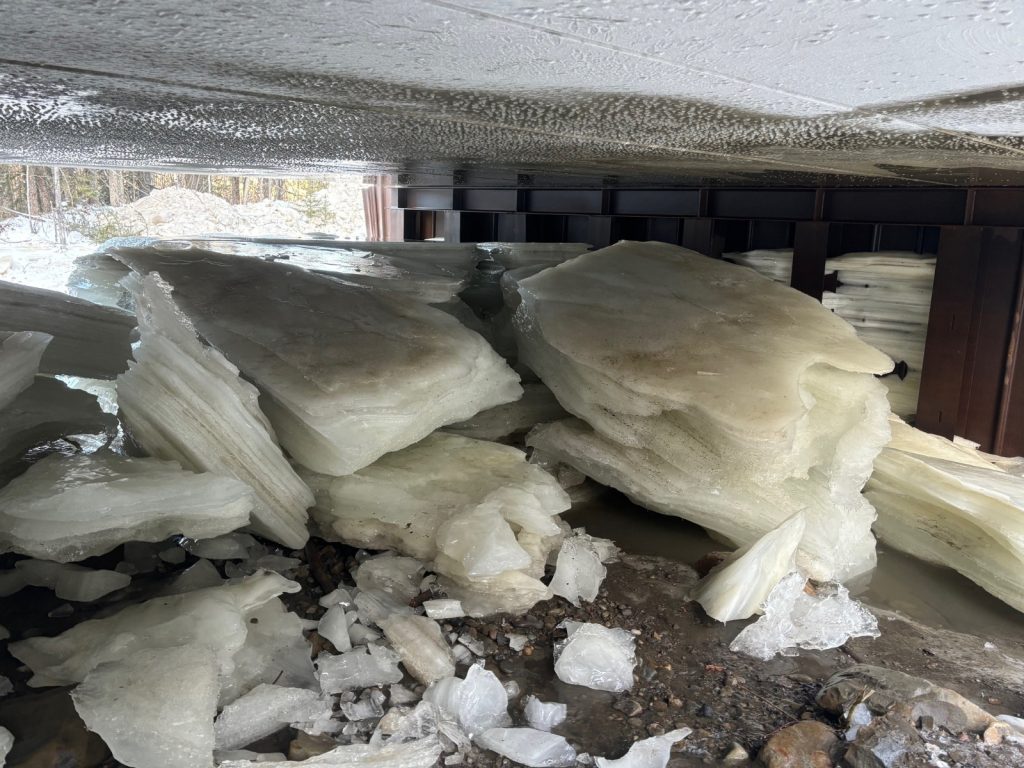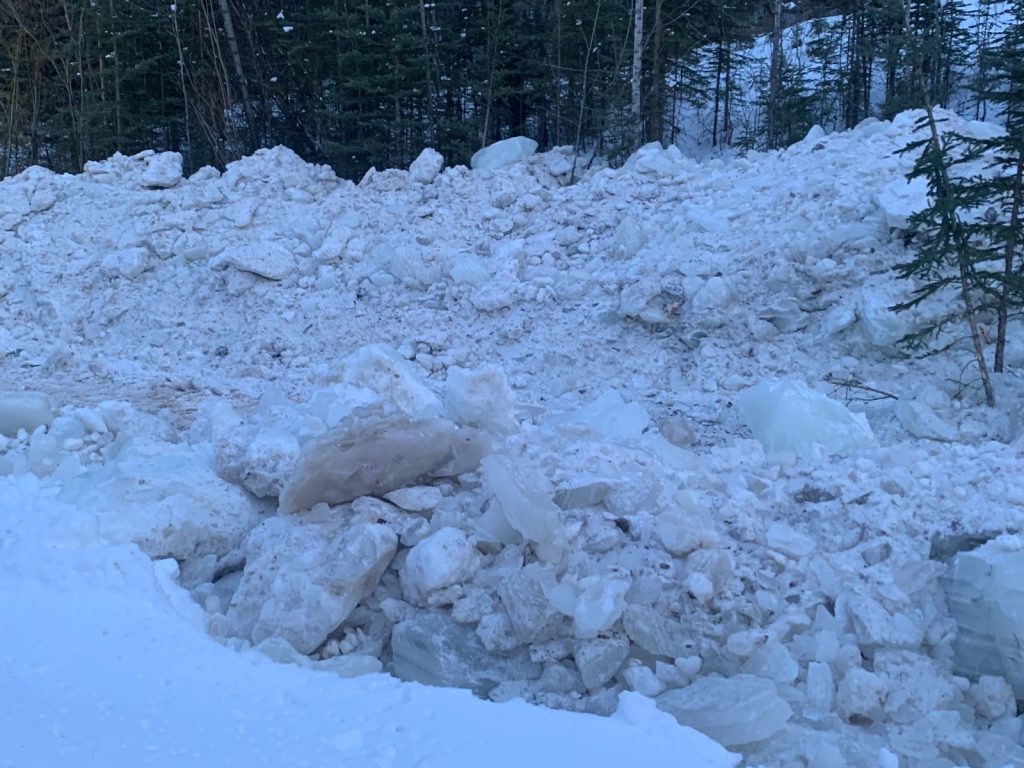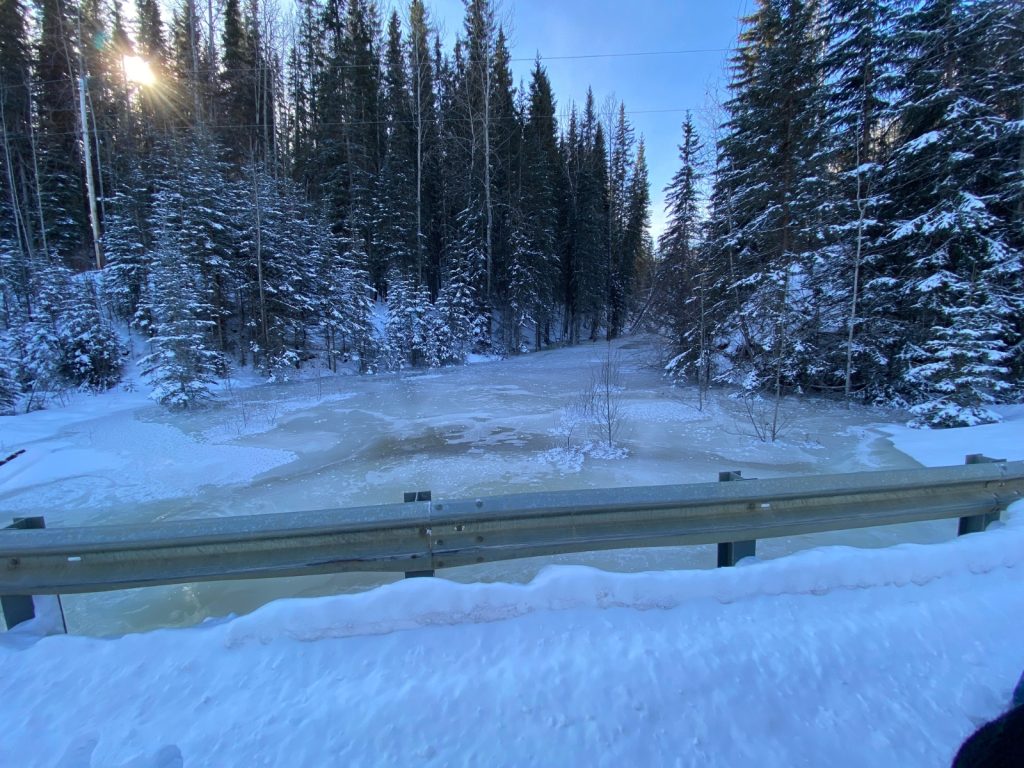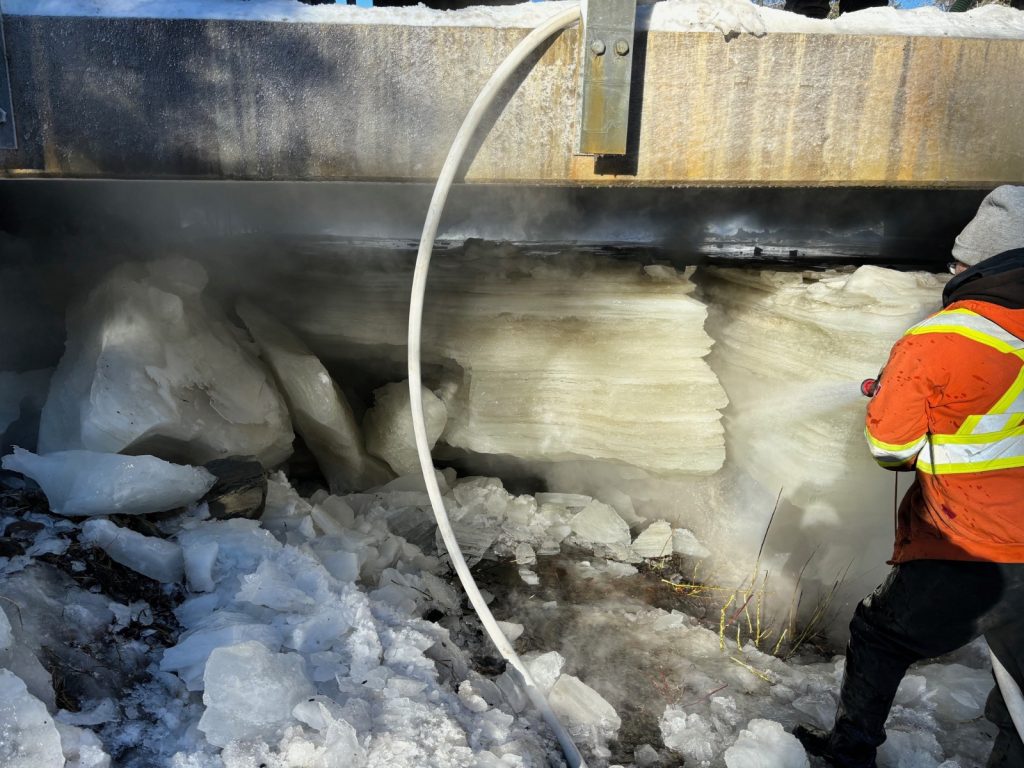As we begin to shift from winter to spring, the freeze-thaw effect can be hazardous, leaving ice buildup on our sidewalks, driveways and roads. It can also have a significant impact on our infrastructure as well.
As February turned into March, the freezing and thawing turned an inlet that spills into the Halfway River at MacDonald Bridge into a wall of ice, growing thicker and wider each day. The bridge is located nearly two hours northwest of Fort St. John.
Nobody had called in with any concerns about the rising ice levels, but a few Dawson Road Maintenance (DRM) operators noticed it while travelling to visit other potential jobsites with members of the B.C. Ministry of Transportation and Infrastructure (MoTI). At the current pace, the ice was about to compromise the integrity of the bridge.
“Ice in that area doesn’t usually get that thick, that fast. We think a beaver dam and a nearby spring, on top of the constant freezing and thawing combined in creating this wall of ice that was as thick as 5 ½ feet in most parts,” said John Seward, Bride Crew Foreman. “We had to remove the ice before it damaged the bridge.”




The citizens of Upper Halfway rely on the MacDonald Bridge when travelling to and from their community. The build up of ice was beginning to be an issue for the piles holding the bridge. The ice buildup was also within two inches from the bridge deck. Any further build up and the bridge would be in severe danger. With an increase in temperature on the horizon, DRM crews had to jump into action to prevent any significant damage.
Seward and his crew began by breaking up the ice upstream. By creating a four-foot wide trench 20-metres upstream, stress on the bridge by the ice would be greatly reduced. Once that was taken care of, they began removing ice downstream with an excavator.
Massive chunks were pulled out of the river until the equipment got too close to the bridge. Not wanting to damage the structure, DRM needed to switch to steamers around the bridge piles. The conditions were so extreme that the normal steamers could not penetrate the thick layers of ice. Larger, industrial steamers were used to melt the ice until they got to the other side of the bridge, when they switched back to using an excavator. From start to finish, the ice removal project took four days.
With the assistance of a few subcontractors, operators removed hundreds of tons of ice over four days, allowing the stream to safely flow beneath the MacDonald Bridge. The nearby community and members of MoTI were thrilled with the proactive efforts made by DRM.
If you’re interested in working for a company that thinks creatively and assists communities with emergency work, then please check out the latest postings on our Careers Page.